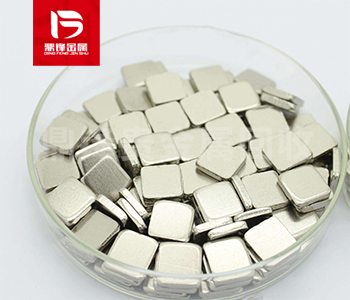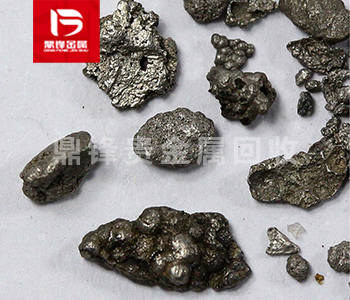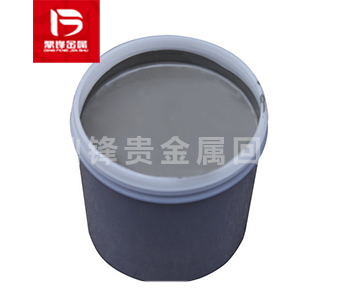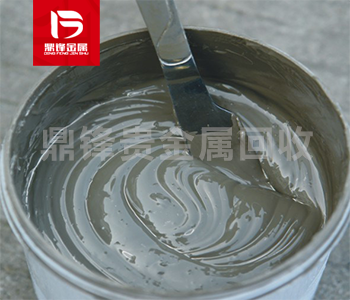What is Palladium(II) oxide? Detailed explanation of main uses of Palladium(II) oxide
Palladium(II) oxide (PdO) is a catalyst composed of palladium (Pd) and oxygen (O). Palladium (Pd) is a rare, precious, silver white metal with excellent corrosion resistance and catalytic performance.
Palladium(II) oxide (PdO) is a catalyst composed of palladium (Pd) and oxygen (O). Palladium (Pd) is a rare, precious, silver white metal with excellent corrosion resistance and catalytic performance. In this paper, we will learn the properties, preparation methods and main applications of Palladium(II) oxide in various fields in detail.
Properties of Palladium(II) oxide
Palladium(II) oxide is a black or dark brown crystal or powder, which has the following physical and chemical properties: 1. Molecular formula: PdO 2. Molecular weight: 122.42g/mole 3. Melting point: about 900 ℃ 4. Density: 8.3 g/cm3 5. It is insoluble in water and acid, but soluble in aqua regia and hydrochloric acid solution 6. It has good thermal stability, but is easy to be reduced to metal palladium at high temperatures
Preparation method of Palladium(II) oxide
1. Direct oxidation method: the palladium metal is directly reacted with oxygen at high temperature to obtain Palladium(II) oxide. This method is simple, but requires higher temperature and oxygen pressure.
2. Chemical oxidation method: the palladium metal is dissolved in acid solution, and then oxidized by adding oxidants such as nitric acid, hydrogen peroxide, etc. Finally, Palladium(II) oxide is obtained by heating, filtering, washing and drying. This method can be performed at lower temperatures and oxygen pressure, but the operation process is relatively complex.

Main applications of Palladium(II) oxide
As an efficient catalyst, Palladium(II) oxide is widely used in many industrial fields. The following are some main application fields: 1 Automobile exhaust treatment: Palladium(II) oxide is an important catalyst for automobile exhaust treatment, which can effectively reduce the emission of toxic substances in the exhaust. In the three-way catalytic converter, Palladium(II) oxide can catalyze the oxidation of carbon monoxide (CO) and hydrocarbons (HC) to carbon dioxide (CO2) and water (H2O), and can also reduce nitrogen oxides (NOx) to nitrogen (N2) and water (H2O). This process helps to reduce environmental pollution and improve air quality. 2. Chemical catalyst: Palladium(II) oxide has high catalytic activity in the field of organic synthesis and is widely used in a variety of chemical reactions. For example, Palladium(II) oxide can catalyze the formation of C-C bond, hydrogenation, dehydrogenation, oxidation and other reactions, thus promoting the synthesis of many important organic compounds, such as drugs, dyes, plastics, etc. 3. Fuel cell: As an efficient catalyst, Palladium(II) oxide can improve the performance of fuel cell. In Proton-exchange membrane fuel cell (PEMFC), Palladium(II) oxide can be used as an anode catalyst to promote the oxidation of hydrogen, thus generating current. At the same time, Palladium(II) oxide can also be used as a cathode catalyst to promote the reduction of oxygen and further improve the efficiency of fuel cells. 4. Electronics industry: Palladium(II) oxide is also widely used in the electronics industry. Because of its good conductivity, Palladium(II) oxide can be used as an additive to improve the conductivity of conductive paste. In addition, Palladium(II) oxide can also be used as an additive for Electroceramics to improve the density and thermal stability of materials. 5. Sensor: Palladium(II) oxide can be used to make gas sensors, especially hydrogen sensors. Because Palladium(II) oxide has a high adsorption capacity for hydrogen, when Palladium(II) oxide contacts with hydrogen, hydrogenation will occur, leading to resistance changes. Therefore, Palladium(II) oxide can be used as the sensitive material of hydrogen sensor to realize rapid and accurate detection of hydrogen concentration.
&Quot; Dingfeng Precious Metals Recycling includes precious metals such as gold, silver, palladium, rhodium, platinum, germanium, iridium, ruthenium, etc. This is our business in precious metal recycling. If you have precious metals such as gold, silver, palladium, rhodium, platinum, germanium, iridium, ruthenium that need to be recycled, please contact us and we will provide you with a satisfactory price& Quot;










